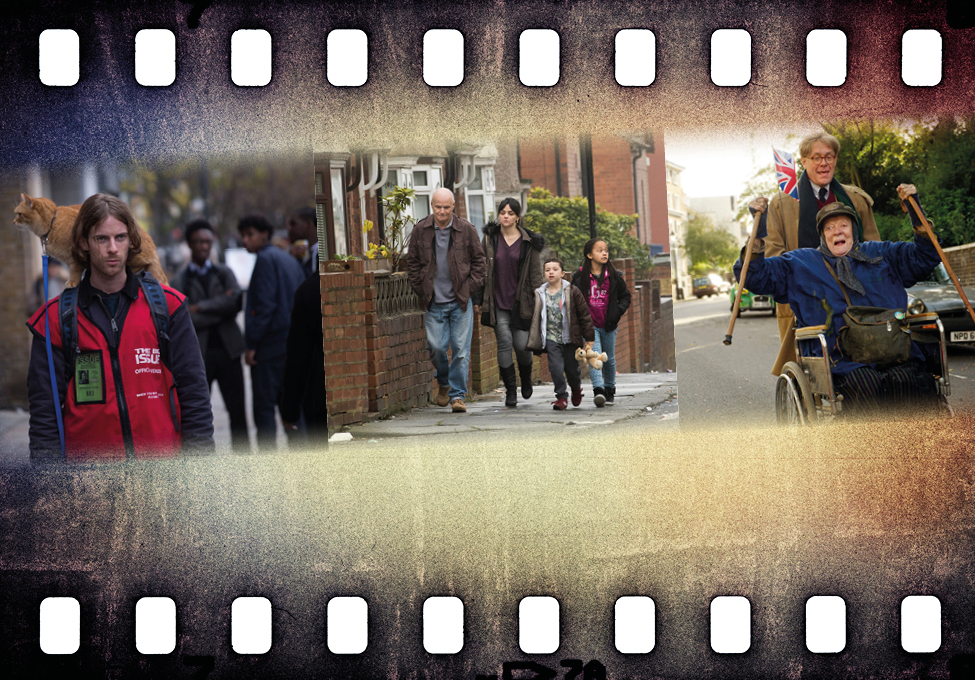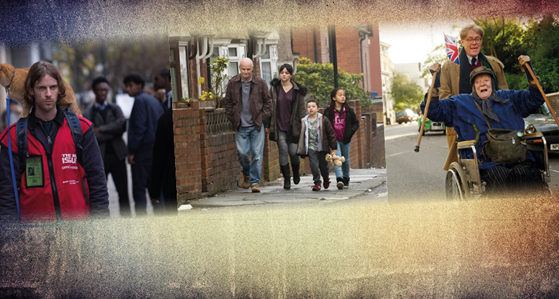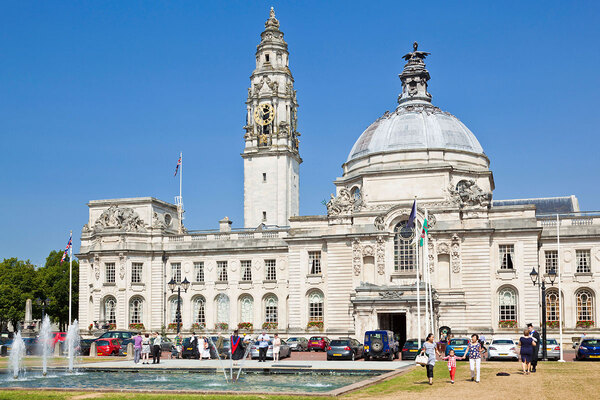Homelessness on film
From I, Daniel Blake to A Street Cat Named Bob, films about housing and homelessness are entering the mainstream. But have they made a difference to people working on the frontline? Kate Youde finds out
Video:
new features style
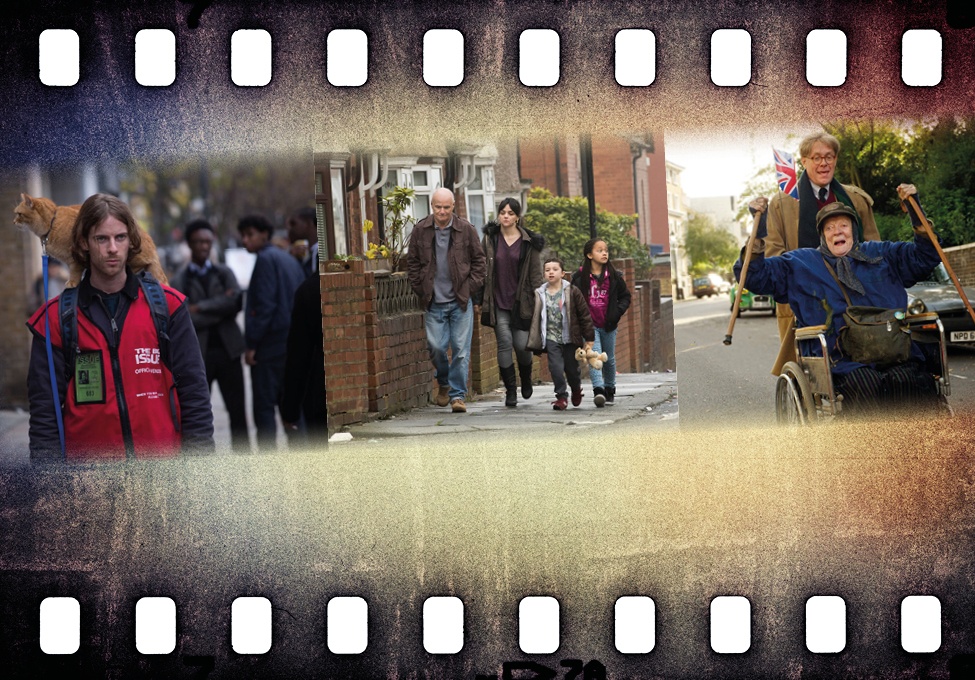
Before he received the script for his recent big-screen adaptation of A Street Cat Named Bob (James Bowen’s bestselling book about being homeless and befriending a stray cat while recovering from heroin addiction), director Roger Spottiswoode had spent close to a year with a friend trying to figure out a way of making a “compelling” documentary about homelessness in New York. “It’s a difficult subject because we’ve all seen a lot of it in the media and it easily goes by,” says Mr Spottiswoode. “We were struggling to find a way into the story.”
Despite the difficulty of portraying homelessness on screen, film-makers are rising to the challenge. Since the release in November 2015 of The Lady in the Van, about a homeless woman who lived on Alan Bennett’s driveway for 15 years, there has been a spate of films addressing the topic. These include actor Paul Bettany’s directorial debut, Shelter, about a couple who fall in love while living on the streets of New York, and Half Way, a documentary by Daisy-May Hudson about her family’s experience of being homeless.
Inside Housing is getting in on the act too by launching the Reel Homes film competition for emerging film-makers as part of its Cathy at 50 campaign. Ms Hudson is one of the competition’s judges.
“I think [the films] are coming out because there’s a need to show there are real problems out there and I think the problems have grown in the last decade,” says Rebecca O’Brien, producer of I, Daniel Blake, Ken Loach’s film about the benefits system in which the character of Katie and her two children are relocated from a homeless hostel in London to Newcastle, due to a lack of housing.
Reel Homes
Inside Housing marked the 50th anniversary of Cathy Come Home by launching a competition for young film-makers. Find out more or submit an entry here.
Fifty years ago, the release of Mr Loach’s television drama Cathy Come Home provoked an outpouring of public sympathy that translated into support for new homelessness charities Shelter and Crisis. But do today’s cinematic depictions of homelessness and the housing crisis lead to donations, increased awareness or, indeed, action?
Snapshots of reality
Deborah Garvie, policy manager at Shelter, thinks a screen portrayal “probably does lead to increased generosity from people”, either through donations or support for the charity’s campaigns, although she is unable to quantify the impact. Shelter also sees increased interest on social media.
“These kinds of movies don’t just speak to a Labour-voting liberal minority.”
Charles Gant, film critic
The plight of homeless families in hostels, bed and breakfasts and emergency accommodation is “the side of homelessness the public rarely sees”, says Ms Garvie. “The biggest challenge for us is [raising] public awareness of how families are having to live; when people do realise that, they are always very shocked because it’s hidden away.” She adds that films like I, Daniel Blake help by giving a snapshot of the reality of homelessness.
“We can allude to that when we speak at events,” she says. “It’s an easy shorthand way for people to understand what we are talking about.”
Stephen Robertson, chief executive of The Big Issue Foundation, says A Street Cat Named Bob, the story of a Big Issue seller, “creates an interest that wouldn’t have been there otherwise”. It helps educate thousands of new people on what The Big Issue Foundation does and challenges perceptions of excluded individuals by putting the serious point “within a context that allows people to get it”. He adds: “It almost ambiently raises the level of awareness or the level of debate around it.”
The charity says it has not seen more homeless people seek its help on the back of Mr Bowen’s books or film but existing vendors benefit from increased awareness of their work. Putting Mr Bowen and Bob on the cover of The Big Issue magazine led to an uplift in sales on the street, adds Mr Robertson, although he was unable to say how big this was.
Commercial gains
It is difficult to know whether audiences are more receptive to seeing these issues portrayed on screen, but there have been commercial successes. The Lady in the Van took £13m at the UK box office and was the fourth-biggest British independent film of 2015, according to the British Film Institute. After six weeks, I, Daniel Blake took more than £3m. It is reaching a wider audience than this suggests, however, as some cinemas ran ‘pay what you can’ screenings. The distributor Entertainment One (eOne) is also doing an early run of the DVD, and offering it at a reduced price to facilitate more than 200 community screenings from January.
A Street Cat Named Bob topped £4.6m at the box office in just over four weeks following its release in November 2016. The distributor Sony positioned it in a “mainstream way”, according to film critic and box office analyst Charles Gant, with a key target being “women over 30 using Mumsnet and reading the Daily Mail”. He says such a commercial positioning of a film about a homeless heroin addict might have been harder to achieve 20 years ago.
Click here for our exclusive Q&A with A Streetcat Named Bob director Roger Spottiswoode
“I think the commercial success of that film… is a very, very encouraging sign that these kinds of movies don’t just speak to a Labour-voting liberal minority,” says Mr Gant. “They can be positioned for a very broad audience.”
“A lot of people cry watching it.. it’s because they recognise, if not themselves, people they know.”
Rebecca O’Brien, producer, I, Daniel Blake
By comparison, eOne made I, Daniel Blake an “issue film” and “something that felt like it was part of the political conversation people were having about austerity”. Mr Gant says the film “wore its politics very much on its sleeve”, leading to coverage on the culture and politics pages.
Striking a nerve
In November 2016, the Labour Party cited I, Daniel Blake to pressure the government to reverse planned cuts to Employment and Support Allowance payments. Hansard reveals politicians had referenced the film in speeches 19 times by mid-December, including Labour leader Jeremy Corbyn’s recommendation that the prime minister see it.
Ms O’Brien says the response to the film, which has “struck a nerve” with audiences, has taken it “beyond the theatrical realm and into the public domain”. “People have a very strong reaction: a lot of people cry watching it; some people applaud at the end,” she adds. “I think it’s because people recognise, if not themselves, people they know.”
The audience has taken “cultural ownership” of the film, she says. A Facebook page allows people to pledge cinema tickets for I, Daniel Blake to those who cannot afford them, while a Twitter campaign, inspired by the film’s depiction of ‘period poverty’, encourages donations of sanitary products to food banks.
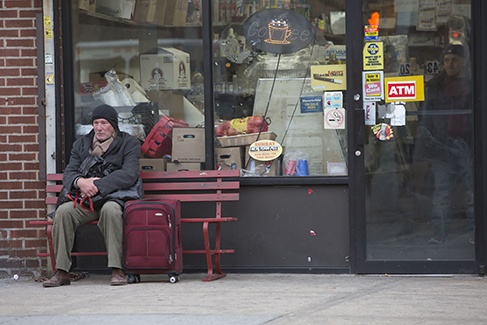
Richard Gere in Time Out of Mind
Although less of a commercial success, Time Out of Mind, in which Richard Gere plays a homeless man, had a direct impact on Crisis and Centrepoint. While in the UK to promote the film, the Hollywood star, who does charitable work for the Coalition for the Homeless in New York, made private visits to service users, while the charities received a proportion of the film’s DVD sales. A celebrity’s involvement helps raise the profile of an issue, says Paul Noblet, Centrepoint’s head of public affairs.
Centrepoint is “geared up” to capitalise on the spotlight provided by such films. “It can be tremendously helpful but, equally, we have to be ready to build on that momentum,” says Mr Noblet. This includes making sure facts are clearly presented on its website, putting up extra content such as case studies about some of the young people it supports “to show the films are real life”, and making good use of social media. Charities also need to be ready to work with volunteers who might come forward on the back of increased coverage, he adds.
The Big Issue Foundation’s Mr Robertson believes the number of films addressing homelessness and the housing crisis “is reflective of the times… and they are hard times”.
He adds: “People taking the time to make films about it is showing they’ve had enough… I think it’s activism.”
Inspired to act
While watching I, Daniel Blake with her husband and son, illustrator Kate Milner thought up a simple solution to help women like the character she saw on screen: donating sanitary products to food banks.
“It all had quite a profound effect on me, but particularly the story of the single mother [Katie] because I guess, like a lot of women, I thought ‘that could have been me’,” she says. “The idea you can’t get a sanitary towel when you need one is just awful.”

The 57-year-old, from Leighton Buzzard, contacted poverty charity The Trussell Trust to check its food banks accept sanitary products and then created illustrations to launch her Twitter campaign, A Bag for Katie, urging people to donate these items.
Ms Milner was determined to do her bit after seeing Mr Loach’s “very quiet and straightforward” film.”It’s got that message that you hardly ever hear in the mainstream media: that poor people are just like the rest of us.”

